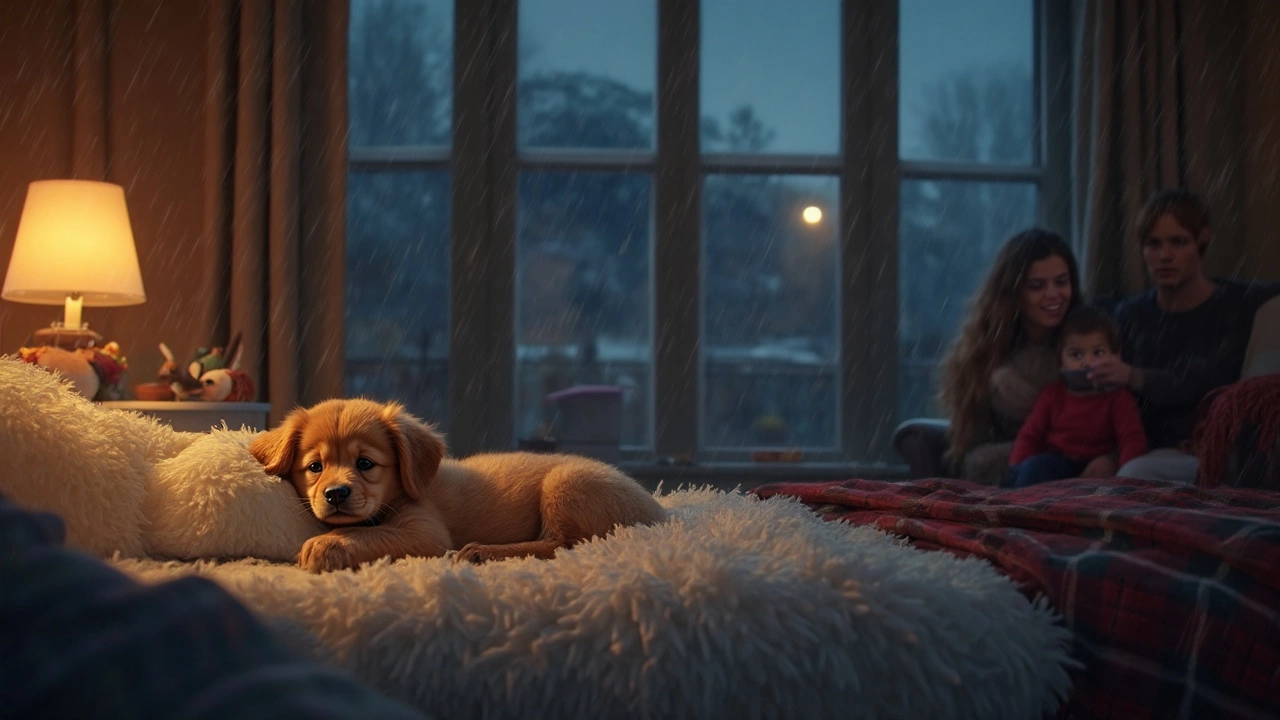Night Routine for Dogs: How to End the Day Right
Ever wonder why your pup is bouncing around at bedtime? Most dogs just need a clear signal that the day is over. A consistent night routine tells them it’s time to chill, reduces anxiety, and leads to a deeper, healthier sleep. Below are the steps that work for most owners, plus a few shortcuts you can try tonight.
Create a Calm Wind‑Down
Start the wind‑down 30‑45 minutes before you plan to turn off the lights. A quick bathroom break is the first must‑do; a full bladder means fewer midnight trips. Then, swap high‑energy toys for a low‑key chew or a puzzle treat. The idea is to shift from “play mode” to “relax mode” without a sudden drop.
Turn the lights down and switch off the TV or loud music. Dogs pick up on our energy, so a quiet room helps them settle. If you usually let your dog wear a collar at night, think about removing it. A collar can rub or chafe when they move around, and many owners report that a collar‑free night feels more comfortable for the pup.
Offer a small, protein‑rich treat – a bite of plain chicken or a dental chew works well. It signals that bedtime is rewarding, not a punishment. Follow the treat with a gentle petting session; slow strokes along the neck and back release endorphins and lower heart rate.
Set Up a Safe Sleep Space
Choose a spot that mimics a den: low lighting, a cozy blanket, and a favorite toy. If your dog likes sleeping with you, let them hop on the bed only if you’re comfortable with it. Otherwise, a crate or dog bed placed in a quiet corner does the trick. The key is consistency – the same spot night after night tells the brain, “this is where I rest.”
Make sure the temperature is comfortable. A room that’s too warm can cause restlessness, while a chilly space can make them shiver. A simple blanket or a heated mat (if your home is cold) solves the problem.
Finally, set a routine cue: a specific word or phrase like “night night” right before you turn the lights off. Pair the cue with the calm actions above, and after a few weeks your dog will associate the phrase with sleep. If you notice your pup still pacing, try a short 5‑minute quiet walk around the house after the treat. The extra step often burns off that last bit of energy.
Putting these pieces together – bathroom break, low‑key treat, collar check, calm petting, cozy spot, and a consistent cue – creates a night routine that most dogs accept without drama. It’s not a magic formula, but a reliable framework you can tweak to fit your dog’s personality.
Give it a try tonight. Within a week you’ll notice fewer midnight bathroom runs, less barking, and a calmer wake‑up. A good night’s sleep for your dog means a happier, healthier companion during the day – and fewer sneaky moves from you when you’re trying to get some rest yourself.

Can an 8 Week Old Puppy Sleep Through the Night? What to Expect
Worried your 8 week old puppy won't let you get any rest? This article explains what’s normal for puppy sleep at this age and why their nights don't always match yours. You’ll get real-world tips for helping your pup (and you) get more sleep. Learn how long puppies can actually hold their bladder, and find out how to set up bedtime for better nights. Whether you’re a first-time puppy parent or just need reassurance, this guide has you covered.
View more
Should I Wake My Puppy at Night to Go Potty? Simple Answers for Sleep-Deprived Owners
Are you supposed to wake your puppy at night so they won’t have accidents? Eating, sleeping, and bathroom breaks are a puppy’s full-time job, and nighttime can get tricky. This article breaks down whether you need to set those midnight alarms plus when you can finally enjoy a full night’s sleep again. Expect real tips to prevent accidents, protect your sleep, and raise a well-trained pup.
View more